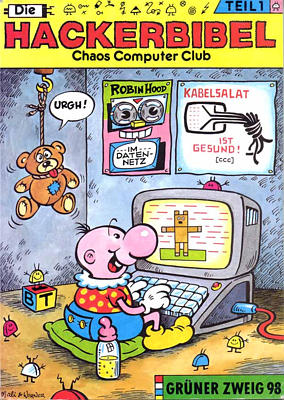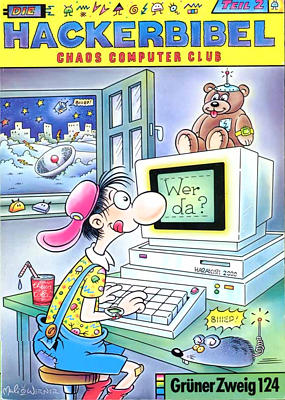Carmela Ciuraru: Nom de Plume: A (Secret) History of Pseudonyms (2011)
Filed under book | Tags: · authorship, history of literature, literature, privacy

What’s in a name?
In our “look at me” era, everyone’s a brand. Privacy now seems a quaint relic, and self-effacement is a thing of the past. Yet, as Nom de Plume reminds us, this was not always the case. Exploring the fascinating stories of more than a dozen authorial impostors across several centuries and cultures, Carmela Ciuraru plumbs the creative process and the darker, often crippling aspects of fame.
Biographies have chronicled the lives of pseudonymous authors such as Mark Twain, Isak Dinesen, and George Eliot, but never before have the stories behind many noms de plume been collected into a single volume. These are narratives of secrecy, obsession, modesty, scandal, defiance, and shame: Only through the protective guise of Lewis Carroll could a shy, half-deaf Victorian mathematician at Oxford feel free to let his imagination run wild. The “three weird sisters” (as they were called by the poet Ted Hughes) from Yorkshire—the Brontes—produced instant bestsellers that transformed them into literary icons, yet they wrote under the cloak of male authorship. Bored by her aristocratic milieu, a cigar-smoking, cross-dressing baroness rejected the rules of propriety by having sexual liaisons with men and women alike, publishing novels and plays under the name George Sand.
Grounded by research yet highly accessible and engaging, these provocative, astonishing stories reveal the complex motives of writers who harbored secret identities—sometimes playfully, sometimes with terrible anguish and tragic consequences. A wide-ranging examination of pseudonyms both familiar and obscure, Nom de Plume is part detective story, part exposé, part literary history, and an absorbing psychological meditation on identity and creativity.
Publisher HarperCollins, 2011
P. S. Series
ISBN 0061735264, 9780061735264
368 pages
Download (removed on 2013-1-15 upon request of the publisher)
Comment (0)Chaos Computer Club (ed.): Die Hackerbibel, 1-2 (1985, 1988) [German]
Filed under book | Tags: · computing, germany, hacker culture, hacking, history of computing, history of technology, internet, machine, networks, privacy, programming, radio, security, technology, telephone, video


“Die Hackerbibel ist eine Publikation des Chaos Computer Clubs. Sie ist bisher in zwei Ausgaben in den Jahren 1985 und 1988 erschienen. Beide Ausgaben wurden von Wau Holland herausgegeben und vom Verlag Grüne Kraft veröffentlicht.
Die Hackerbibel ist ein Sammelsurium aus Dokumenten und Geschichten der Hacker-Szene, wie beispielsweise die Bauanleitung für den als „Datenklo“ betitelten Akustikkoppler. Sie bietet darüber hinaus Bauanleitungen und andere technische Hintergründe. Die 1. Ausgabe erschien 1985 mit dem Untertitel Kabelsalat ist gesund, und erzielte bis Mitte 1988 eine verkaufte Auflage von 25.000 Exemplaren. Die Ausgabe 2 aus dem Jahr 1988 wird auch Das neue Testament genannt. Die Comic-Zeichnungen der Umschlagbilder sind eine Schöpfung der deutschen Comic-Zeichner Mali Beinhorn und Werner Büsch von der Comicwerkstatt Büsch-Beinhorn. Die Produktion und der Vertrieb der Hackerbibel wurde schon vor 1990 eingestellt. Seit 1999 bietet der CCC eine gescannte und im Volltext verfügbare Version mit weiterem Material, wie Texte von Peter Glaser, eine Dokumentation zu Karl Koch und die Arbeiten von Tron, auf der Chaos-CD an.” (wikipedia)
Die Hackerbibel Teil 1. Kabelsalat ist gesund, Grünen Kraft, Löhrbach, ISBN 3922708986, 260 Seiten
Die Hackerbibel Teil 2. Das neue Testament, Grünen Kraft, Löhrbach, ISBN 3925817247, 260 Seiten
PDF (Teil 1, 56 MB, no OCR, updated on 2024-2-3)
HTML (Teil 1, updated on 2024-2-3)
PDF (Teil 2, 43 MB, no OCR, updated on 2024-2-3)
HTML (Teil 2, updated on 2024-2-3)
Helen Nissenbaum, Kazys Varnelis: Situated Technologies Pamphlet 9: Modulated Cities: Networked Spaces, Reconstituted Subjects (2012)
Filed under book | Tags: · networks, privacy
The Situated Technologies Pamphlets series explores the implications of ubiquitous computing for architecture and urbanism. How is our experience of the city and the choices we make in it affected by mobile communications, pervasive media, and other “situated” technologies?
In Situated Technologies Pamphlets 9, Helen Nissenbaum and Kazys Varnelis initiate a redefinition of privacy in the age of big data and networked, geo-spatial environments. Digital technologies permeate our lives and make the walls of the built environment increasingly porous, no longer the hard boundary they once were when it comes to decisions about privacy. Data profiling, aggregation, analysis, and sharing are broad and hidden, making it harder than ever to constrain the flow of data about us. Cautioning that suffocating surveillance could lead to paralyzed dullness, Nissenbaum and Varnelis do not ask us to retreat from digital media but advance interventions like protest, policy changes, and re-design as possible counter-strategies.
Publisher Architectural League of New York, Spring 2012
Creative Commons Attribution 2.0 license
ISBN 978-0-9800994-8-5
56 pages


